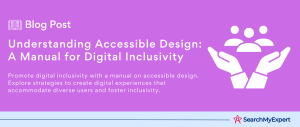Color Theory in Digital Media
In the vast expanse of visual communication, color theory emerges as a fundamental pillar, profoundly influencing how content is perceived and understood. At its core, color theory is an extensive conceptual framework used to categorize and apply color effectively, thereby enhancing visual storytelling. This guide delves deep into the realm of color theory, specifically tailored for digital media applications.
The Significance of Color Theory in Visual Communication
Color theory isn’t merely about choosing appealing combinations; it’s a meticulous science that affects mood, elicits emotions, and conveys messages without words. In the digital age, where screens are the primary medium of consumption, understanding color theory is crucial. It helps designers, artists, and marketers to make informed decisions about color schemes that engage, inform, and convert their audience.
Unique Considerations in Digital Color Theory
Digital color theory brings its own set of unique considerations. Unlike traditional media, digital platforms offer an expansive color range, with RGB (Red, Green, and Blue) becoming the foundational model for electronic displays. The digital realm also introduces new dynamics in how colors are mixed, perceived, and presented, significantly affecting design and branding strategies.
Setting the Stage for Exploration
As we navigate through this guide, we will explore various elements of color theory critical to digital media. From understanding the color wheel and color harmony to the psychological impact of colors, each section is designed to provide a comprehensive understanding of how colors can be used effectively in digital content. The journey through the intricacies of color theory will equip you with the knowledge to use color not just as an aesthetic choice, but as a powerful communication tool in the digital landscape.
Decoding the Attributes of Color: Hue, Saturation, and Brightness
In the vibrant world of digital media, understanding the fundamental attributes of color is essential. These attributes – hue, saturation, and brightness – form the backbone of color theory and are crucial in crafting visually appealing and effective designs.
Hue: The Foundation of Color Identity
Hue refers to the basic color itself, the aspect that distinguishes red from blue, yellow from green, and so on. It’s essentially the specific wavelength of color that we see and is often represented on a color wheel. In digital design, hue serves as the starting point for color selection, setting the tone and mood of the design.
Saturation: The Intensity and Purity of Color
Saturation measures the intensity or purity of a hue. It defines how vivid, rich, or muted a color appears. High saturation means the color is pure and intense, while low saturation results in a more washed-out, grayish appearance. In digital media, adjusting saturation can impact the visual energy and emotional response elicited by a design.
Brightness: The Lightness or Darkness of Color
Brightness, sometimes referred to as value or lightness, is the attribute of color that indicates how light or dark a color is. It determines the amount of lightness or darkness infused into the hue. A high brightness level makes a color lighter, whereas a low brightness level makes it darker, influencing the contrast and readability in digital designs.
The Interplay of Color Attributes in Digital Media
In digital environments, these three attributes are not isolated; they interact dynamically to produce a wide range of colors and effects. Adjusting one can significantly alter the perception of the others. For instance, increasing saturation can make a color appear brighter while decreasing brightness can make a color seem less saturated. This interplay is crucial in creating color palettes that are harmonious and visually engaging.
Introduction to Color Spaces in Digital Displays
Color spaces are an integral part of digital color theory. They define the range (gamut) of colors that can be displayed or reproduced on digital devices. Common color spaces like RGB (Red, Green, Blue) and CMYK (Cyan, Magenta, Yellow, Key/Black) are used in various digital media applications. Understanding these color spaces is vital for designers and content creators, as it affects how colors are mixed and presented on different devices, ensuring consistency and accuracy in digital visuals.
Mastering Color Harmonies in Digital Design
Color harmonies are like the symphony of a visual composition, where colors are orchestrated to create balance, unity, and appeal. In digital media, understanding and applying these harmonies can elevate a design, making it more engaging and effective.
Types of Color Harmonies
- Complementary Color Harmony:
This involves using colors that are opposite each other on the color wheel. Complementary colors, such as blue and orange, create high contrast and vibrancy. In digital media, this harmony is often used for call-to-action buttons or areas needing emphasis. - Analogous Color Harmony:
This uses adjacent colors on the color wheel. For example, a combination of green, blue-green, and blue creates a serene and comfortable design. It’s excellent for creating a cohesive and harmonious look in web design and user interfaces. - Triadic Color Harmony:
This harmony uses three colors evenly spaced around the color wheel. A classic example is the combination of red, yellow, and blue. It offers vibrant and dynamic visuals while maintaining balance, suitable for captivating graphics and advertisements. - Tetradic (Double Complementary) Color Harmony:
This involves two pairs of complementary colors. It offers plenty of possibilities in color variation and is great for creating diverse yet harmonious designs, especially in complex web pages or digital artwork.
The Importance of Color Contrast
Color contrast is not just about aesthetics; it’s vital for legibility, accessibility, and visual hierarchy. High contrast between text and background improves readability while contrasting colors can direct the viewer’s attention to specific elements, establishing a visual hierarchy. For users with visual impairments, adequate contrast is crucial for accessibility.
Effective and Ineffective Uses of Color Harmony and Contrast
- Effective Use:
A website with a triadic color scheme using blue, red, and yellow for its navigation, headlines, and buttons. The high contrast between the elements and the background ensures legibility and draws attention to important sections. - Ineffective Use:
An online store using analogous colors like light blue text on a slightly darker blue background. This low-contrast scenario makes reading difficult, potentially driving away users. - Effective Use:
An infographic utilizing complementary colors (like purple and yellow) for its charts and graphs. This not only makes the data stand out but also makes the infographic more visually appealing and engaging. - Ineffective Use:
A digital ad with tetradic color harmony but with poor color distribution, leads to a chaotic and unbalanced appearance that can overwhelm the viewer.
The Psychological Power of Colors in Digital Media
Color psychology plays a pivotal role in digital media, influencing perceptions, emotions, and behaviors. Understanding the psychological impact of colors, along with their cultural connotations, is crucial for creating digital content that resonates with the audience.
Color Associations and Cultural Contexts
- Red:
Often associated with energy, passion, and urgency. In digital marketing, red can be used to grab attention, create a sense of urgency, or highlight important elements. - Blue:
Symbolizes trust, stability, and calmness. Widely used in corporate and healthcare websites, blue can create a sense of reliability and professionalism. - Green:
Represents nature, growth, and harmony. It’s frequently used to promote environmental issues and organic products. - Yellow:
Conveys happiness, optimism, and caution. It’s effective in children’s content and warning signs. - Black and White:
While black denotes sophistication and elegance, white is associated with simplicity and cleanliness. These colors are often used in fashion and design-related digital platforms.
Cultural Contexts: It’s important to note that these associations can vary culturally. For instance, white is often associated with purity in Western cultures but can symbolize mourning in some Eastern cultures.
Influencing Factors in Color Perception
- Lighting and Screen Settings:
The way colors are perceived can change under different lighting conditions and screen settings. Designers should ensure that their color choices remain effective and consistent across various devices and lighting. - Context:
The meaning of a color can change depending on the context. For example, green in a financial app could symbolize growth, whereas in a health app, it might represent wellness. - Individual Differences:
Personal experiences, preferences, and cultural backgrounds can influence how individuals perceive colors.
Leveraging Color Psychology in Digital Media
- Evoke Emotions: Choose colors that align with the emotional response you want to elicit. For instance, use warm colors like red and orange for excitement and cool colors like blue and green for a calming effect.
- Enhance Brand Identity: Consistently use color schemes that reflect your brand’s personality and values. This helps in building brand recognition and trust.
- Improve Usability and Accessibility: Use contrasting colors for text and backgrounds to improve readability. Additionally, be mindful of colorblind users by avoiding color combinations that are difficult to distinguish.
- Create Effective Call-to-Actions:
Use colors that stand out, like red or orange, for call-to-action buttons to draw attention and prompt action.
Harnessing Color Theory in Digital Design Disciplines
Color theory is a vital component across various digital design fields. Its application significantly impacts branding, user experience, and the overall effectiveness of designs. Here, we explore its practical applications in web design, graphic design, UI/UX design, and more.
Web Design
- Branding:
Colors play a crucial role in creating a brand’s visual identity. For example, a tech company might use a blue color scheme to convey trust and reliability. - User Engagement: Strategic color usage can guide visitors’ attention to key sections of a website, like using a contrasting color for the ‘Sign Up’ button to make it stand out.
Graphic Design
- Emotional Connection: Colors in graphic design can set the tone of the message. For instance, green in an environmental campaign poster evokes a sense of nature and growth.
- Visual Hierarchy: Using color contrasts can emphasize the most critical parts of a design, like a bright-colored call-to-action in an advertisement.
UI/UX Design
- User Experience:
Colors can significantly impact the usability and accessibility of an app. High-contrast color schemes enhance readability and user navigation. - Aesthetic Appeal:
An aesthetically pleasing color palette can enhance user satisfaction and engagement with the app.
Color in Animation and Gaming
- Mood Setting:
In animation and gaming, color schemes can create immersive environments, like using dark, muted colors for a mysterious setting. - Character Design:
Character personalities can be hinted through their color schemes, like vibrant colors for a lively character.
Tools and Resources for Color Manipulation
- Adobe Color CC: A popular tool for creating color schemes, allowing designers to explore and create color palettes.
- Coolors:
An intuitive color scheme generator that’s useful for quickly creating and adjusting palettes. - Paletton: A tool that helps designers see how their color choices interact together, useful for understanding color harmony.
- ColorZilla: A browser extension that assists in picking colors from web pages, useful for web designers and developers.
- Canva Color Palette Generator: Ideal for those looking for inspiration or wanting to generate a palette from an image.
Navigating Color Considerations Across Digital Platforms
In the digital realm, colors must be adapted to different platforms, such as screens, projectors, and print outputs, to maintain consistency and effectiveness. This section explores key considerations and provides tips for managing color across these varied mediums.
Screens (Monitors, Mobile Devices)
- Calibration:
Screen calibration is essential for accurate color representation. Calibrated screens ensure that the colors designers see during the creation process match what the end-users see. - Resolution and Quality: Higher resolution screens can display colors more accurately. Designers need to consider the range of devices their audience uses, from high-end monitors to budget smartphones.
Projectors
- Ambient Light:
Projector colors can be significantly affected by ambient lighting. Bright rooms require projectors with higher brightness to maintain color integrity. - Surface Reflection:
The color and texture of the surface where the image is projected can alter color perception. It’s important to test colors on the actual surface used for presentation.
Print Outputs
- CMYK Color Model:
Unlike digital screens that use RGB, print materials use the CMYK color model. This requires conversion of RGB to CMYK, which can result in color shifts. - Paper Quality and Type:
Paper type and quality can affect how colors appear. Glossy surfaces reflect more light and can make colors appear brighter and more saturated.
Accessibility Standards
- Contrast Ratio:
Maintaining a high contrast ratio is important for readability, especially for people with visual impairments. Tools like the Web Content Accessibility Guidelines (WCAG) provide standards for contrast. - Color Blindness Considerations: Designing with color blindness in mind involves avoiding certain color combinations (like green and red) that are problematic for colorblind users.
File Formats and Color Representation
- File Formats:
Different file formats handle colors differently. Formats like JPEG and PNG are widely used for the web and support millions of colors, while formats like GIF are limited in color representation. - Color Profiles: Embedding color profiles in files can help maintain color consistency across different devices and platforms.
Tips for Consistent Color Presentation Across Digital Channels
- Test on Multiple Devices: Preview your designs on various devices and screens to ensure consistent color representation.
- Use Standardized Color Palettes:
Employ standardized color palettes that are designed to look similar across different devices. - Consider Context: How colors are perceived can change based on context. Test colors in the actual environment they will be displayed, whether it’s on a screen, through a projector, or in print.
- Embed Color Profiles:
Including color profiles in your digital files can help in maintaining color consistency when files are opened on different devices. - Consult Accessibility Guidelines:
Regularly refer to accessibility guidelines to ensure your color choices are compliant and accessible to all users.
Color Theory in Digital Media: Key Takeaways and Future Directions
As we conclude our comprehensive exploration of color theory in digital media, it’s important to reflect on the key takeaways and look ahead to the emerging trends shaping the future of color usage in the digital landscape.
Key Takeaways
- Fundamental Properties: Understanding the basic properties of color – hue, saturation, and brightness – is crucial for creating compelling digital designs.
- Color Harmonies and Contrast:
Mastering color harmonies (complementary, analogous, triadic, etc.) and leveraging color contrast effectively can significantly enhance the visual appeal and functionality of digital content. - Psychological Impact: Colors have a profound psychological impact, influencing emotions and behaviors. This makes them powerful tools in digital storytelling and branding.
- Cultural Sensitivities: Recognizing the cultural connotations of colors ensures that digital content resonates appropriately with diverse audiences.
- Accessibility and Usability: Adhering to accessibility standards and considering usability in color choices makes digital content more inclusive and user-friendly.
- Adaptation Across Platforms:
Tailoring color choices to different digital platforms, from screens to print, is vital for consistent and accurate color representation.
Emerging Trends and Future Directions
- Advanced Color Technology: Innovations in screen technology, like OLED and quantum dots, are offering more vibrant colors and deeper contrasts, pushing the boundaries of digital color representation.
- AI and Machine Learning:
AI algorithms are starting to play a role in color selection, helping designers with predictive color trends and harmonies. - Sustainable Colors: With an increasing focus on sustainability, there’s a growing trend towards using colors that reflect eco-friendliness and natural aesthetics.
- Inclusive Design: There’s a growing emphasis on inclusive design, which involves considering how color is perceived by people with different types of color vision deficiencies.
- Augmented Reality (AR) and Virtual Reality (VR): These technologies are creating new dimensions in color theory application, with immersive environments offering novel ways to experience and interact with color.
Conclusion:
In summary, this comprehensive guide has provided a deep dive into the world of color theory and its application in digital media. From understanding the fundamental properties of color to exploring the psychological impacts and practical applications across different platforms, the significance of color theory in digital design is undeniable. As digital media continues to evolve, staying abreast of emerging trends and technologies in color usage will be essential. By experimenting with and applying these color theory principles, designers and creators can significantly enhance the effectiveness, emotional resonance, and inclusivity of their digital creations. The journey into the vibrant world of digital color is an ongoing adventure, rich with opportunities for innovation and creativity.
Maximize your online appeal with our Digital Designing Services.
Table of Contents
Toggle






